I refered to Fitting empirical distribution to theoretical ones with Scipy (Python)? and generated the best fit distribution to my sample data. I wish to generate random numbers according to the best fit distribution. See image below.
However, in https://docs.scipy.org/doc/numpy-1.13.0/reference/generated/numpy.random.f.html#numpy.random.f, there is only 3 parameters, dfnum, dfden, size=None, where should I insert loc and scale. By the way, the dnd and dfd in best fit distribution are float and in numpy.random, it wants integer.
If I use only dnd and dfd in the code df_members['bd'] = df_members.bd.apply(lambda x: np.rint((np.random.f(dfnum=1441, dfden=19))) if x==-999 else x ) ,such values will be generated, which is false.


